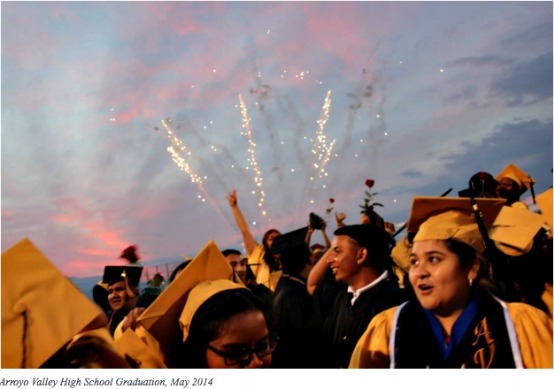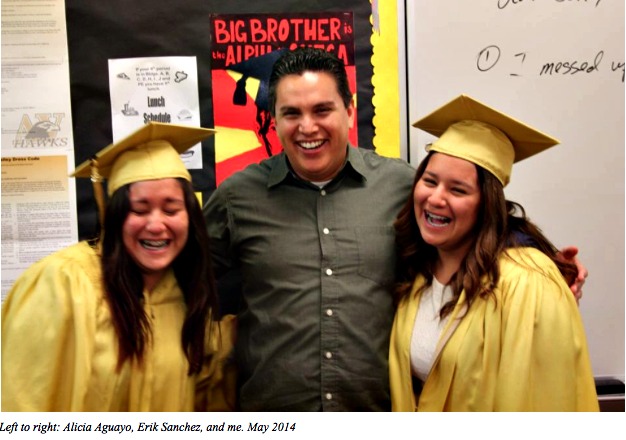I attended Arroyo Valley High School, a school located on the West Side of San Bernardino, California. Arroyo was a promising school. It is a Visual And Performing Arts (VAPA) school, and it has Advanced Placement (AP) courses and the International Baccalaureate (IB) program along with other various programs.
My high school’s role in preparing me for college was limited. Luckily, I had great teachers in the IB program who gave me books and a curriculum that made me question the world as it exists, such as Mr. Sanchez and Dr. Mudd. Sanchez provided me a lens outside of the white supremacist frame of history, and he exposed me to many narratives that are often not taught in high school. Mudd taught us pathos, logos, and ethos. These are tools to persuade and communicate better. I had a strong support system when applying to the university, and I owe many of the teachers and faculty at Arroyo a lot for helping me get to college. While I was aware of what the courses would look like in college, I was not ready for some of the other experiences.
The real test was everything that came after accepting my admission to the university. I was admitted to San Francisco State University, but eventually had my admission revoked because I didn’t follow through with the application and follow up process. I then decided to attend San Bernardino Valley College, where I realized that most of the things I learned in high school weren’t applicable (except for the things I previously mentioned). By the time I transferred to the University of California, Riverside, I had come to understand how dehumanizing most of the classes I took were and that the things that did prepare me for college were things I was able to learn in leadership roles in high school: being yearbook editor, co-founding the Students for Change Club with my twin sister, and Soar Link Crew.
As a first generation college student, there is a lot of pressure to make it to the university and earn a degree to make the sacrifices of my parents worthwhile. I want to acknowledge that schools who serve large populations of low-income students are tasked with a bigger role helping students like me, who have parents that did not attend college and who have relied on help from peer mentors, like siblings or others in my community. I have had to lean on people who were trying to learn the ropes themselves with nothing but uncertainty.
It’s also important to recognize the reasons behind the emphasis of attending college. For many of us, it is the only feasible opportunity to overcome the poverty that we’ve grown up in. When you consider the cost of college and how many of us have to rely on loans to get through our degree programs, there’s an added stress of not just having pressure from the demands of the coursework but also having to worry about how to pay back loans once we are done with school and the uncertainty of the job market.
Sometimes I hear criticism from community members and even school board members saying things such as “not everyone needs to attend the university.” I understand that there are folks who are happy and doing well in vocational careers. I want to emphasize that this does not make a person inferior, but it is often in places like my community where students are pushed the least and do not really have any other choices than to pursue the career and technical education path.
It is crucial to have teachers and community leaders encourage students in the San Bernardino City Unified School District to attend college and to give them tools so they can can really have a choice about whether to pursue a four year degree or to earn a trade or professional certification. We should have these choices; the system and its leaders shouldn’t select the path for us.
Rocio Aguayo
Latest posts by Rocio Aguayo (see all)
- Perspectivas desde Inland Empire: Como los Ingresos Afectan los Resultados de Aprendizaje en los Estudiantes - January 31, 2019
- Perspectives from the Inland Empire: How Income Impacts Student Learning Outcomes - January 30, 2019
- Luchadora Alex Beltran esta en un Empate Con el Titular de San Bernardino en el Consejo Municipal - December 4, 2018
- Luchadora Alex Beltran is Neck and Neck with San Bernardino Incumbent in City Council Race - December 4, 2018
- Los Jóvenes Pueden Hacer Una Diferencia en Esta elección, Incluso si son Demasiado Jóvenes para Votar - November 6, 2018


